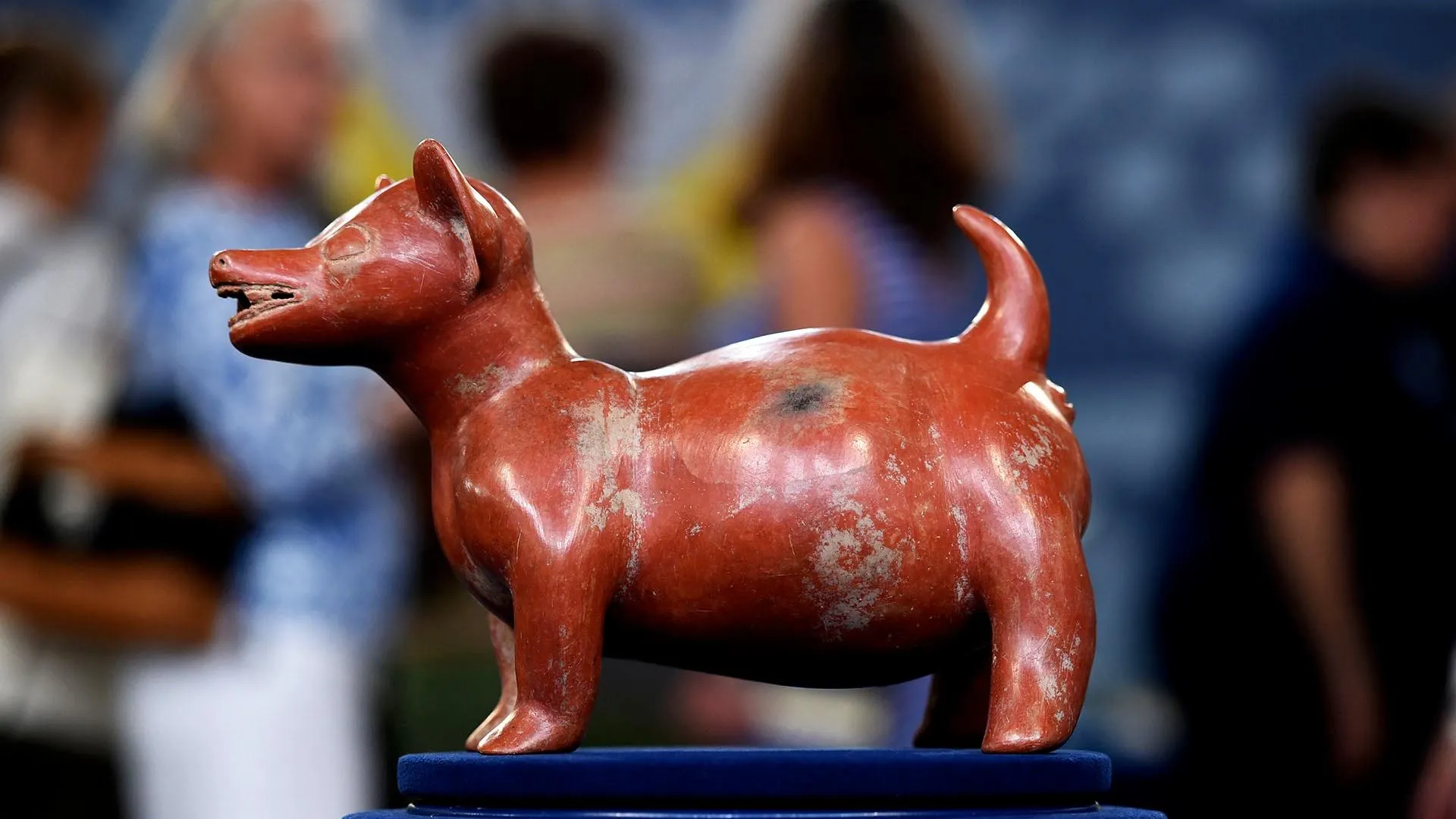GUEST: It's been in the family for a number of years. It was one of those things where all of a sudden, no one wanted it anymore. (laughs) People aren't really into snake motifs so much, and it had to fit into the right place. So, decided it would be nice to have, and honestly don't know all that much about it except that I believe it's bronze. I believe it's from a French artist, maybe the early 1900s. That's about it.
APPRAISER: Well, it is very clearly signed on the base. It says Edgar Brandt, "E. Brandt," and Edgar Brandt was the leading metalworker in France starting in the 1920s up through the 1940s. He actually didn't die until 1960. His main body of work was wrought iron. He was the master of wrought iron in the '20s and '30s. He did all kinds of architectural work, he did doors, radiator grills, fences. He worked in Paris, he also worked in New York City. And this is one of the lamps that he made. This came in two sizes-- it came in this size and it came in a table size.
GUEST: No kidding.
APPRAISER: And sometimes they have this glass shade, and they also come with an alabaster shade. Alabaster is a soft stone that's translucent.
GUEST: Right.
APPRAISER: Brandt made this part, this is made out of bronze, and the shade was probably done by the Daum glass factory. Daum Nancy is in the eastern part of France by the German border. And this is from the Art Deco period, from the 1920s. "Art Deco" term comes from an exhibition that was held in Paris in 1925. And Brandt, as a matter of fact, designed the entrance gates to that fair.
GUEST: No way.
APPRAISER: This is like his most famous, famous piece. And it has a title... I know my French is awful.
GUEST: That's okay.
APPRAISER: And we're going to get all these letters and emails. It's called "La Tentation"-- "The Temptation," or "Seduction."
GUEST: Oh, well, makes sense.
APPRAISER: So it's this wild snake coming out of a basket down there.
GUEST: Right.
APPRAISER: The 1920s is when Howard Carter found King Tut's tomb...
GUEST: Right.
APPRAISER: So there was a tremendous amount of interest in things that were Egyptian.
GUEST: Okay.
APPRAISER: They sometimes called it Egyptomania. Very, very desirable, it's very rare, lots of fakes, lots of reproductions, so it's nice that the one you have is a real one.
GUEST: All right! That's the good part, right?
APPRAISER: That is the good part. And there's a better part.
GUEST: Okay.
APPRAISER: In terms of the value, the condition on this is a little shaky.
GUEST: Right.
APPRAISER: It has some problems here with this green. Bronze is mainly copper, so when it deteriorates, it turns this green.
GUEST: Mm-hmm.
APPRAISER: It's the reason the Statue of Liberty is green. In a gallery setting, you're talking about $35,000 to $45,000.
GUEST: No kidding! (chuckling): Wow! That's incredible. So if you were to see one like this in, like, pristine condition, what is that then?
APPRAISER: There was one at auction that brought $62,000.
GUEST: Wow.
APPRAISER: So I assume the condition was better. It also had a very strong provenance, which can be important. But I think $35,000 to $45,000 is pretty good.
GUEST: That's incredible. That's pretty good for a snake lamp.














